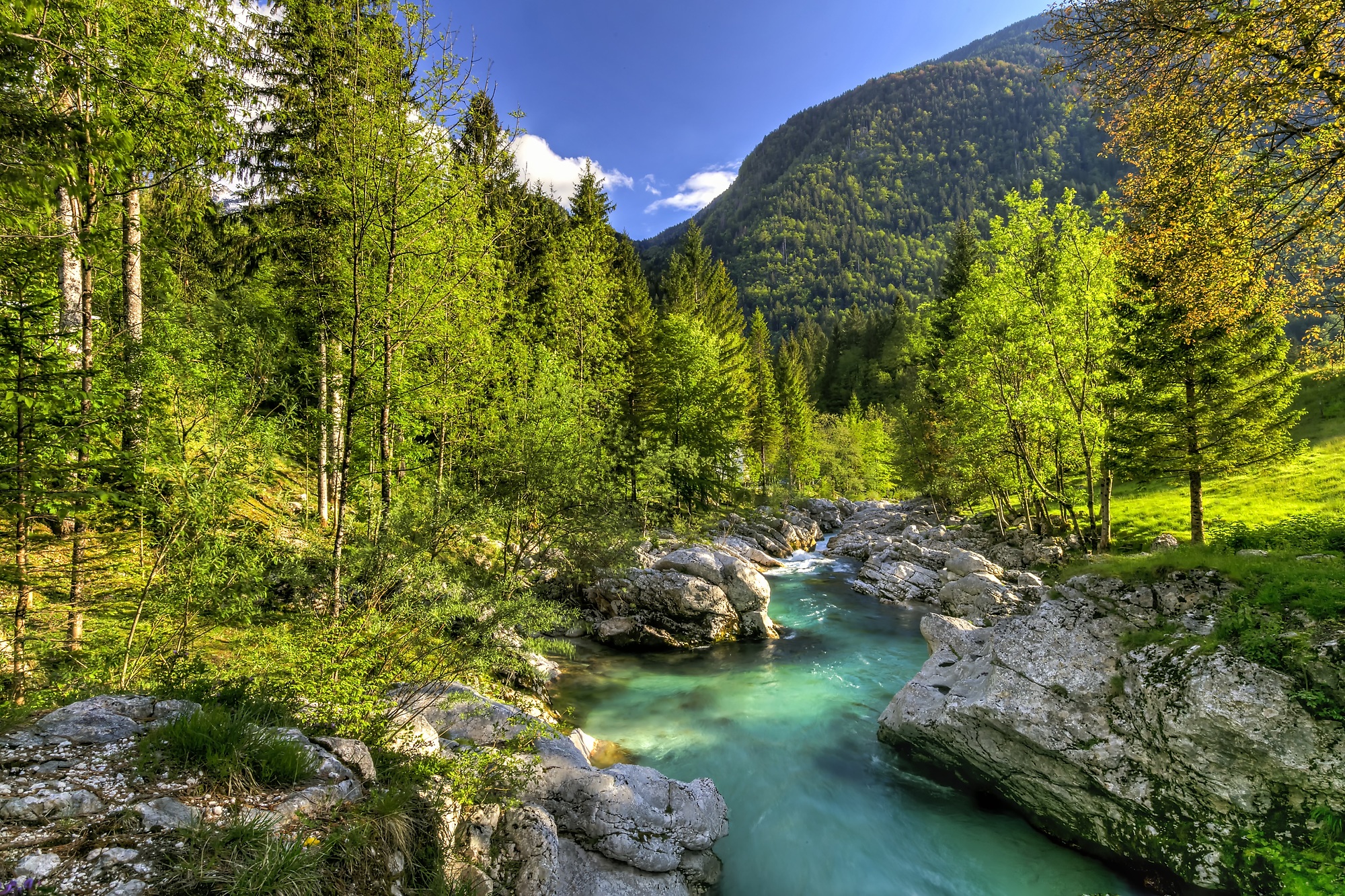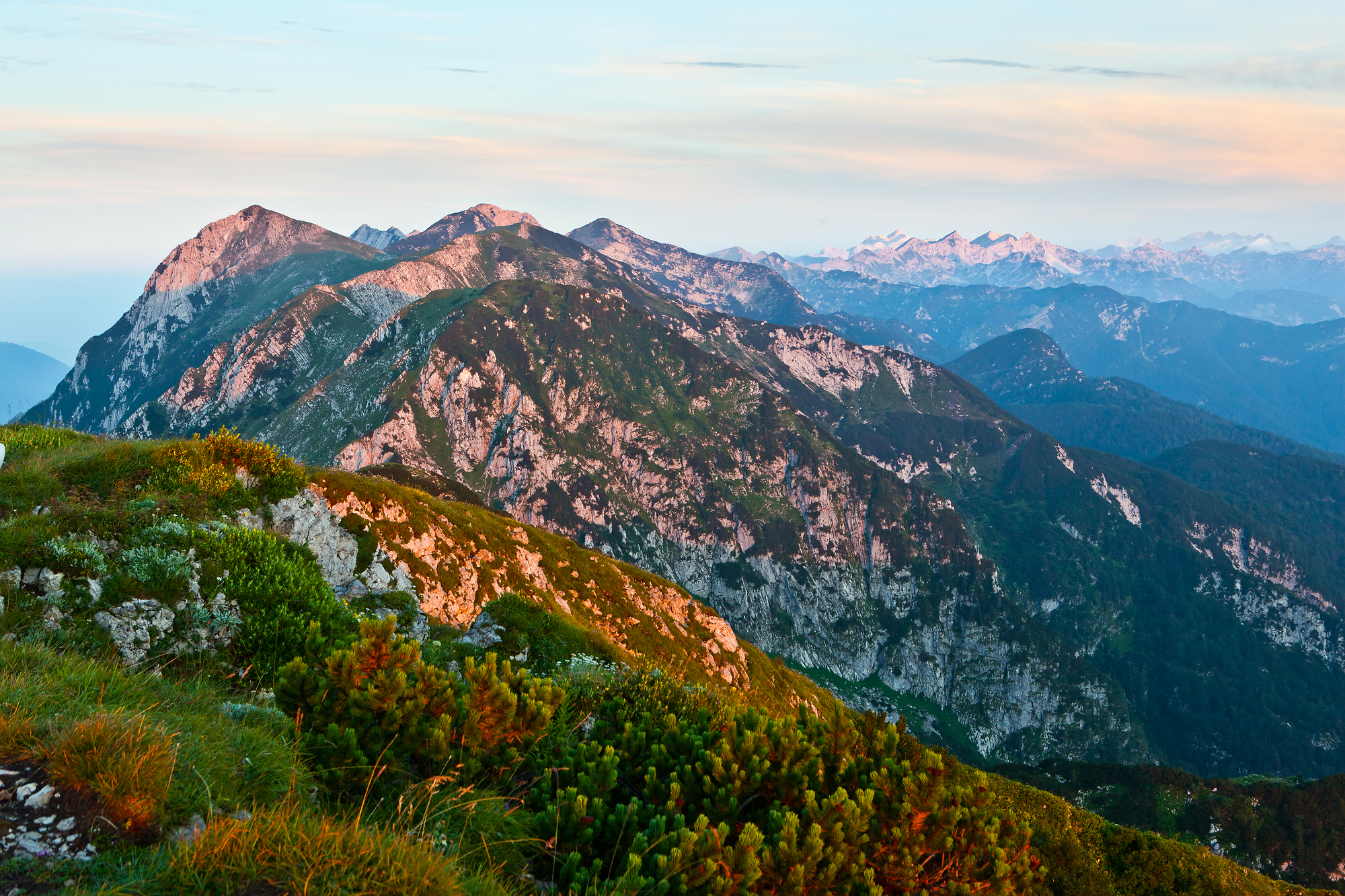Slovenia’s Green Embrace
About
Halfway between London and Istanbul; a good two-hour drive from Venice; or a short trip from the metropolises of Vienna and Prague – geographically, historically, and culturally, Slovenia has for long been a blend of diverse features. In a relatively small area of 20,273 square kilometres one can find the best of a whole continent: mountains and lakes, the Adriatic Sea, rolling hills and vineyards, ancient castles, and charming cities with a more dynamic urban beat, with pristine countryside flourishing around them.
As a country that historically developed at the crossroads, Slovenia has absorbed influences from the neighbouring territories that have left their distinctive traces – the result being a stunning variety of professions, lifestyles, traditions and culture shared by its 2,100,000 residents.
With 60% of its surface area covered by woods, it’s the third most forested country in Europe, while more than two thirds of its territory have since twenty years been placed under the protection of the Natura 2000 Network, making it the leading country on the continent.
Whether in the city or in the countryside, wherever you turn, you will find an abundance of green topped by a striking biodiversity. For centuries, the people living here have been in harmony with nature and still making their best to preserve the country green for future generations. Efforts aimed at sustainable development and environmental preservation have been systematically integrated through education and certification in the tourism & travel sector, thus reinforcing the country’s international image as a rising star among green destinations.
Some Interesting Facts
-
- Slovenia consistently ranks among the top 10 countries in the Global Peace Index, and is in 2022 positioned as the 6th safest country in Europe and 7th in the world.
- Slovenia is also one of the most environmentally friendly countries in the world. According to the Good Country Index, Slovenia ranks fourth among 169 countries in terms of its positive contribution to the planet and the climate.
- Slovenia is in the world’s top for the number of published books per million residents, only exceeded by Great Britain. Poetry is a cherished literary genre. In terms of musical tradition, Ljubljana boasts having the second oldest Philarmonic society in Europe, whose predecessor was established in 1701.
- Slovenia is also in the world’s top according to general participation in sport, which amounts to 64% of the population, and ranks alongside Scandinavian countries. It also features remarkably high in the statistics of Olympic medallists per number of country residents. Not only the oldest wooden wheel with an axle and the oldest known instrument, a Neanderthal flute, in the world were discovered in Slovenia, as it is also home to the oldest skis found in Central Europe.
- Slovenia is a country with above-average biodiversity and is an absolute champion in terms of the number of animal and plant species per square kilometre. Its area accounts for 0.004% of the Earth’s total area and 0.014% of the Earth’s land area. Nonetheless, it is home to 1% of all known species and more than 2% of all terrestrial species. Slovenia is home to over 3,100 native plant species and 18 registered native animal species. It also has a native honeybee species, the Carniolan honeybee, while the Lipizzan white horse breed was established in Lipica in the Slovenian Karst region in 1580.



It is no cliché but pure truth that there are only a few countries in the world where one can hit the ski slopes of the Alps in the morning and then drive off to take a dip in the sea in the afternoon.
This, and much more, can absolutely be done in Slovenia.
More information: www.slovenia.info.

